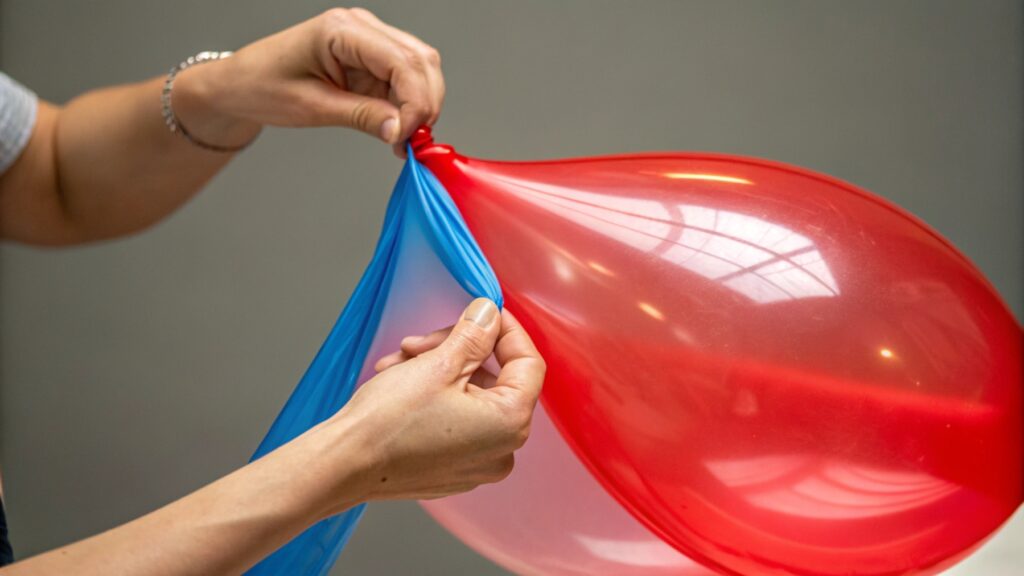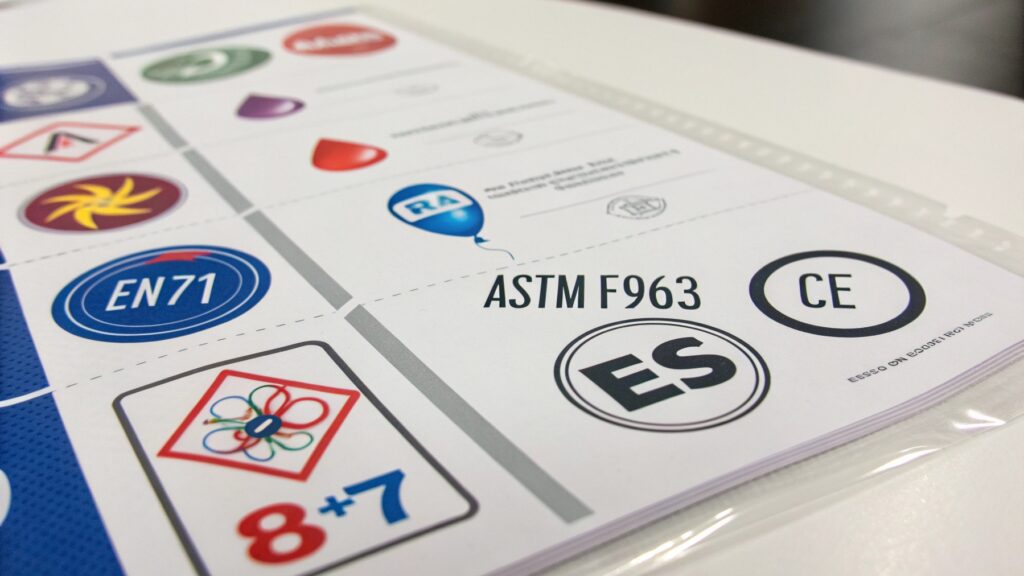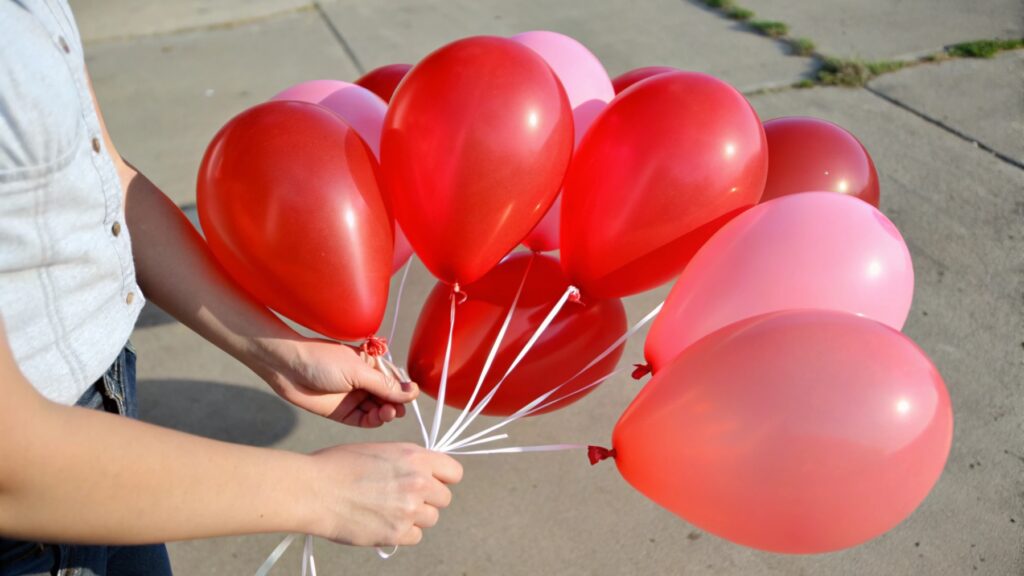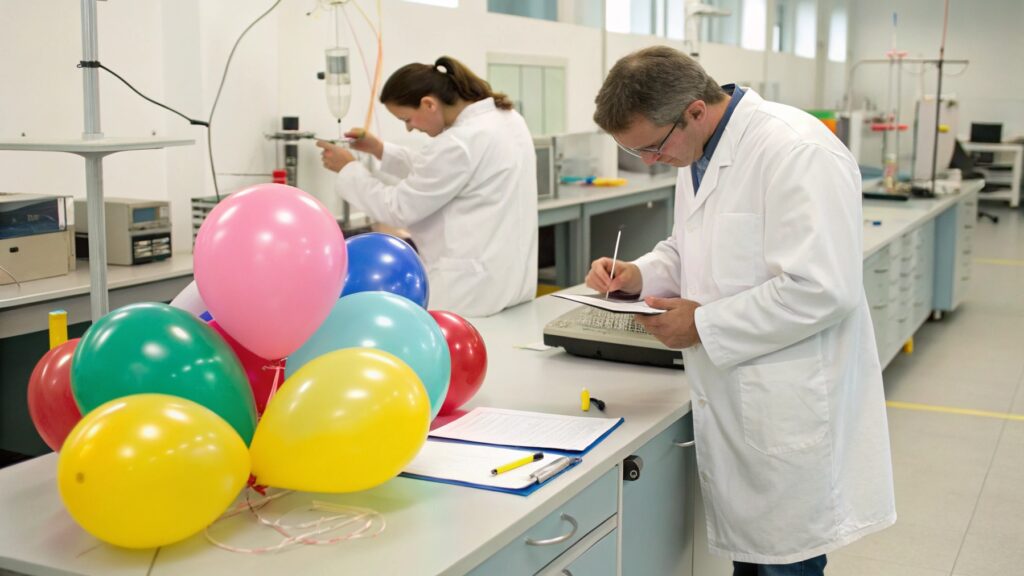What are the key quality indicators for wholesale latex balloons?
Are you struggling to find reliable balloon suppliers? Are inconsistent quality and safety concerns causing you headaches? You need to know the key quality indicators.
The key quality indicators for wholesale latex balloons include durability, stretch resistance, safety certifications, thickness, color consistency, and the supplier's quality control process. Checking these ensures you get high-quality, reliable products for your business.

Finding good wholesale latex balloons is important. It affects your business and your customers. I have been in the balloon industry for over 10 years. I know what makes a good balloon. It's not just about the look. It's about quality and safety. Let me tell you what to look for.
How do you test latex balloon durability and stretch resistance1 before bulk ordering?
Are you worried about balloons popping too easily? Do you need balloons that last? Testing durability and stretch is essential before buying in bulk.
You can test latex balloon durability and stretch resistance by inflating them to different sizes and observing how they hold up, performing inflation and deflation cycles, and gently pulling the uninflated latex to check its elasticity and strength.

Testing durability and stretch is a must. You don't want complaints about balloons that don't last. Here is how I test them. First, I take a sample balloon. I inflate it. I watch how it expands. Does it feel strong? Does it feel thin in spots? I inflate it to its recommended size. Then I wait. Does it stay inflated? Does it slowly lose air? I also try to stretch the uninflated balloon. Is it elastic? Does it snap back? A good balloon stretches well. It feels strong. It does not feel like it will tear easily. You can also inflate and deflate it a few times. See if it keeps its shape and strength.
How does humidity affect balloon durability2?
Humidity can change how long a balloon lasts. High humidity makes latex absorb water. This can make the balloon weaker. It might pop more easily. Low humidity can make latex dry out. This also makes it weaker. The best humidity for storing balloons is around 40-60%.
What is the burst pressure test3?
The burst pressure test measures how much air pressure a balloon can hold before it pops. Suppliers use machines for this test. They inflate the balloon inside a container. The machine measures the air pressure. A higher number means a stronger balloon.
| Test Type | How it's done | What it tells you |
|---|---|---|
| Inflation Test | Inflate to size, check for leaks/shape issues | Overall quality, seam strength |
| Stretch Test | Pull uninflated latex | Elasticity, material strength |
| Burst Pressure Test | Inflate until pop, measure pressure | Maximum strength |
What safety certifications should wholesale latex balloons meet for export markets?
Are you exporting balloons? Do you know the rules for other countries? Safety certifications are key for export.
Wholesale latex balloons for export markets should meet certifications like EN71 (Europe), ASTM F963 (USA), and Prop 65 (California). These ensure the balloons are free from harmful substances and are safe for use.

Exporting balloons means following rules. Every country has its own safety standards. You must know them. If you don't, your shipment might be stopped. Or worse, your customers could have problems. The main certifications are EN71 for Europe and ASTM F9634 for the USA. These cover things like chemicals and small parts. They make sure the balloons are not toxic. They make sure they don't have small pieces that can break off and be swallowed. In California, you need to think about Prop 65. This law lists chemicals that can cause cancer or birth defects. Your balloons should not have these chemicals above certain levels. Ask your supplier for proof of these certifications. I always check for Sedex and ISO9001 too. Sedex shows the supplier cares about ethics and social responsibility. ISO9001 shows they have a good quality management system. These give me more confidence in the supplier.
What is the difference between EN715 and ASTM F963?
EN71 is a set of European standards for toy safety. Part 1 covers mechanical and physical properties. Part 2 covers flammability. Part 3 covers the migration of certain elements. ASTM F963 is the standard Consumer Safety Specification for Toy Safety in the United States. It covers similar areas but has some differences in testing methods and limits for chemicals.
Why is Proposition 65 important for US exports?
Proposition 656, also known as the Safe Drinking Water and Toxic Enforcement Act of 1986, requires businesses to warn Californians about significant exposures to chemicals that cause cancer, birth defects or other reproductive harm. If your balloons contain any listed chemicals above the safe harbor level, you must provide a warning label.
| Certification | Region Covered | Key Focus Areas |
|---|---|---|
| EN71 | Europe | Mechanical, physical, flammability, chemical safety |
| ASTM F963 | USA | Mechanical, physical, chemical safety, small parts |
| Prop 65 | California, USA | Listing of toxic chemicals, warning requirements |
How can buyers evaluate latex balloon thickness and color consistency in bulk shipments?
Do your balloons look different in every box? Is the color off? Is the thickness uneven? Checking thickness and color consistency is important for a good brand image.
Buyers can evaluate latex balloon thickness by visually inspecting samples and using a micrometer, and assess color consistency by comparing balloons from different parts of a bulk shipment against a standard color swatch or previous orders.

Thickness and color must be right. If not, your customers will notice. Uneven thickness makes balloons pop unpredictably. Bad color ruins decorations. I check thickness by feeling the balloon. Does it feel the same all over? Is it too thin? For a more exact check, you can use a micrometer. This tool measures thickness very accurately. I take measurements from different parts of the balloon. I also check balloons from different boxes in the shipment. For color, I have a standard color chart. I compare the balloons to this chart. I look at balloons from the top, middle, and bottom of the boxes. Are they all the same shade? Is there a lot of variation? A good supplier will have a quality control process for color and thickness. They should send you samples before the main order. You can check these samples carefully. When the bulk order arrives, check again. Make sure it matches the sample.
Why is consistent thickness7 important?
Consistent thickness ensures that balloons inflate evenly and have predictable strength and durability. Balloons with thin spots are prone to premature popping, leading to waste and customer dissatisfaction. Consistent thickness also affects how the balloon feels and looks when inflated.
How is color consistency8 controlled in manufacturing?
Suppliers use precise color pigments and mixing processes to achieve consistent color. They often use spectrophotometers, which are tools that measure color accurately, to compare each batch against a standard. Good lighting conditions are also crucial when visually inspecting colors.
| Quality Aspect | How to Check | Tool/Method |
|---|---|---|
| Thickness | Visual inspection, feeling the latex | Micrometer |
| Color Consistency | Compare to color swatch/previous samples, visual | Spectrophotometer |
| Even Inflation | Inflate balloons and observe expansion pattern | Visual inspection |
What are the standard quality control tests for wholesale latex balloon suppliers?
Do you know what tests your supplier is doing? Are they checking quality before they ship? Understanding their tests builds trust.
Standard quality control tests for wholesale latex balloon suppliers include tensile strength and elongation tests, aging tests, inflation tests, burst tests, and checks for pinholes, leaks, and visual defects like inconsistent color or thickness.

Good suppliers do a lot of testing. They don't just make balloons and send them out. They check them at every step. They test the raw materials. They test the balloons during production. They test the final product. What tests do they do? They test how much the latex can stretch before it breaks. This is the tensile strength and elongation test. They do aging tests. This shows how the balloon will last over time. They put the balloons in a hot place to see how they handle heat. They do inflation tests. They check if the balloons inflate properly and don't leak. They do burst tests. They see how much pressure the balloon can take. They also do visual checks. They look for holes, thin spots, and bad colors. They should have records of these tests. Ask your supplier for their quality control reports. A good supplier will be happy to share this information. It shows they are confident in their quality. It shows they care about providing good products.
What is an aging test?
An aging test simulates the effect of time and storage conditions on balloons. Balloons are often placed in a controlled environment, such as an oven at a specific temperature, for a set period. This test helps predict how well the balloons will maintain their quality over their shelf life.
How are pinholes and leaks detected?
Suppliers use various methods to detect pinholes and leaks. One common method is to slightly inflate balloons and submerge them in water, looking for bubbles. Automated systems can also use air pressure and sensors to check for leaks. Visual inspection under good lighting is also used.
| Test Name | Purpose | How it's Performed |
|---|---|---|
| Tensile Strength & Elongation9 | Measures material strength and stretchiness | Machine pulls latex until it breaks |
| Aging Test10 | Predicts shelf life and durability over time | Balloons stored in controlled environment |
| Inflation Test | Checks for leaks, proper inflation, shape | Balloons are inflated and observed |
| Burst Test | Measures maximum pressure capacity | Balloons inflated until they pop, pressure recorded |
| Visual Inspection11 | Checks for defects like pinholes, color, etc. | Manual check by trained staff |
Conclusion
Focusing on durability, safety certifications, thickness, and color consistency, backed by robust supplier quality control, guarantees reliable wholesale latex balloons for your business.
-
Learning about stretch resistance will help you select balloons that maintain their shape and integrity during use, enhancing customer satisfaction. ↩
-
Humidity plays a significant role in balloon longevity. Discover how it impacts balloon performance and what you can do to mitigate effects. ↩
-
Understanding the burst pressure test is crucial for ensuring balloon safety and quality. Explore this link to learn more about the testing process. ↩
-
Exploring ASTM F963 helps you grasp the safety requirements for balloons in the US, ensuring compliance and safety for consumers. ↩
-
Understanding EN71 standards is crucial for ensuring your balloons meet European safety regulations, protecting your business and customers. ↩
-
Learning about Proposition 65 is essential for businesses to avoid legal issues and ensure their products are safe for consumers in California. ↩
-
Understanding the importance of consistent thickness can help you ensure quality and durability in your balloon products. ↩
-
Exploring color consistency control methods can enhance your knowledge of quality assurance in balloon production. ↩
-
Learn about tensile strength testing to ensure your balloons meet quality standards and perform well under stress. This resource is essential for suppliers. ↩
-
Understanding aging tests can help you ensure the quality and longevity of your balloon products. Explore this link for detailed insights. ↩
-
Visual inspection is crucial for identifying defects in balloons. Discover effective methods to ensure product quality through this informative link. ↩
